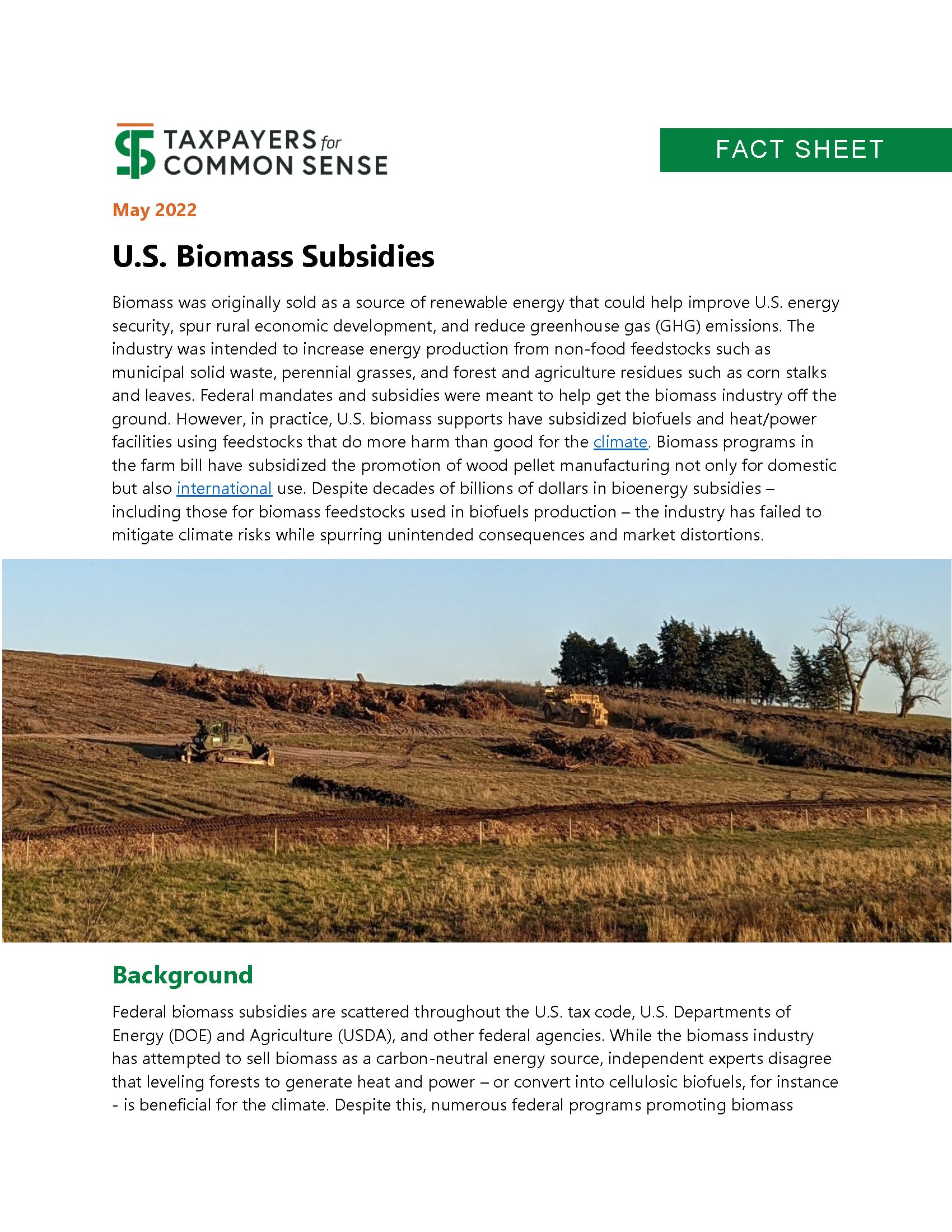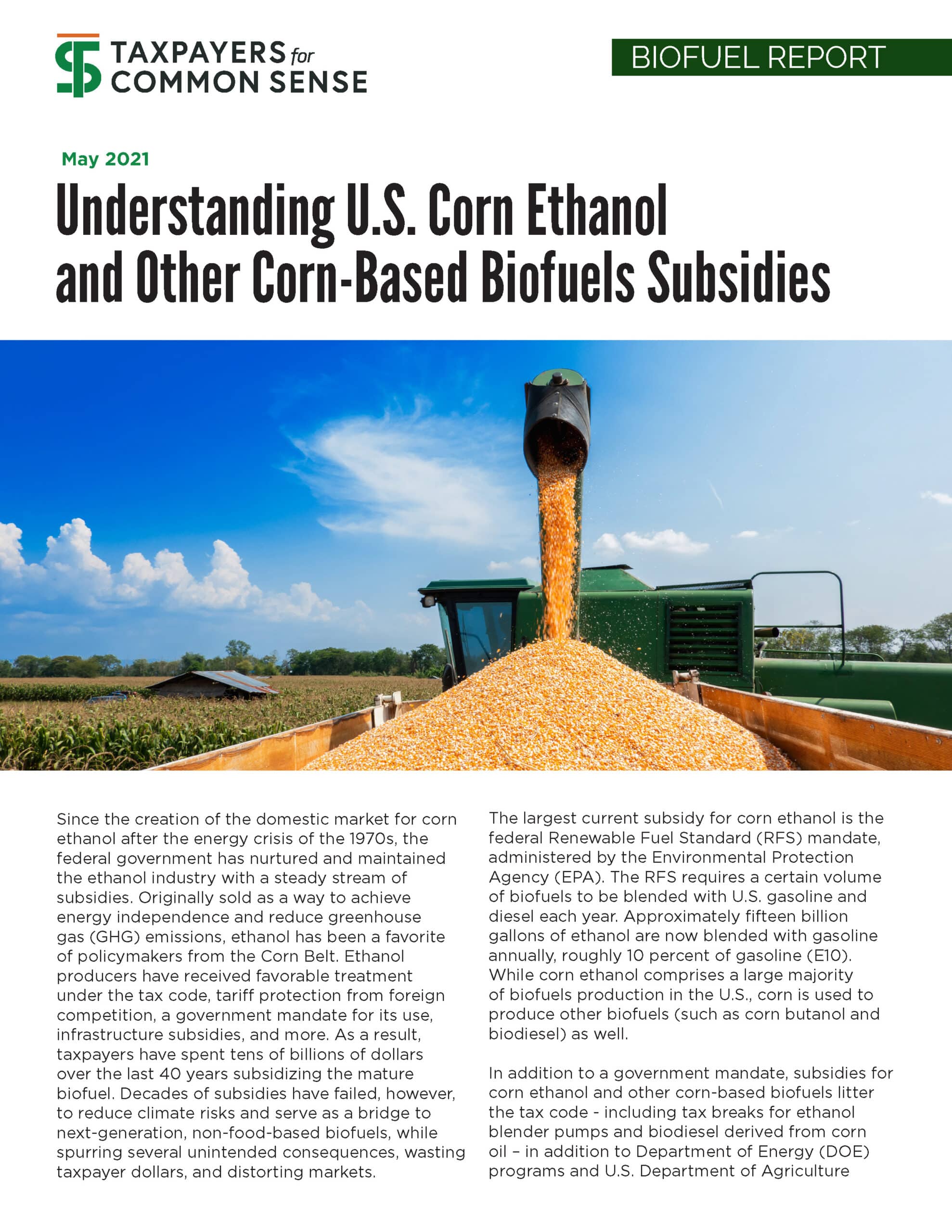Deep Dive: Bioenergy
Taxpayers and the federal government helped launch the U.S. biofuels and biomass industries. Bioenergy subsidies, along with duplicative and counterproductive biofuels infrastructure tax credits, loan guarantees, and the federal Renewable Fuel Standard (RFS) consumption mandate, helped the industry overproduce and grow to a size that would not have been possible without taxpayer support. Bioenergy was intended to significantly reduce greenhouse gas (GHG) emissions and move the U.S. away from fossil fuels. However, in practice, federal policies and subsidies do not significantly reduce GHG emissions as once intended. Current incentives may even increase and accelerate the impacts of climate change.
Want to know more about Bioenergy?
We’ve been talking about this topic for a long time. Explore our deep archive of material below.







